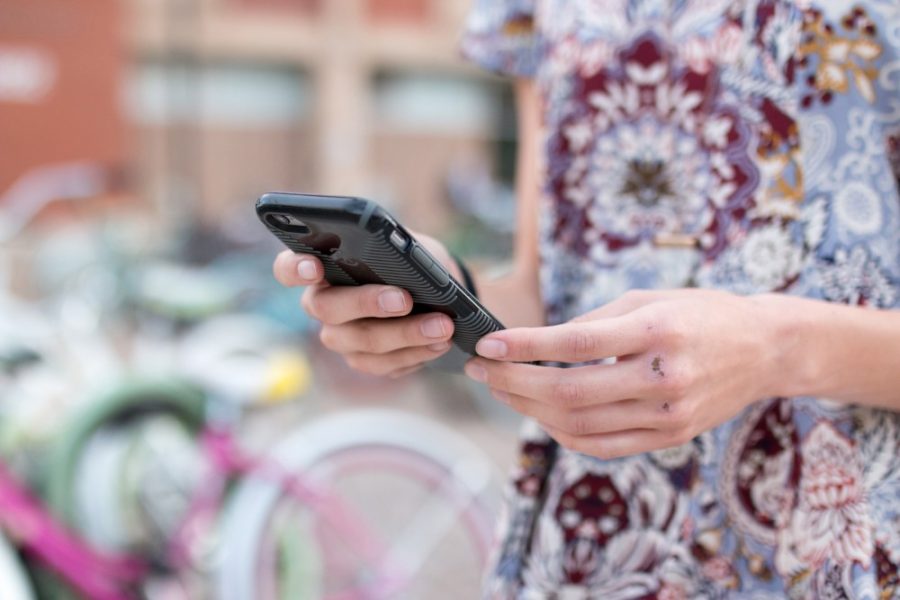UA officials responded to students questioning the UAlert system after a lack of alerts sent after the case of a shooting that occurred just off campus on Feb. 23.
In his response, the University of Arizona Police Department Chief of Police explained why there was a lack of UAlerts and how his team is constantly evaluating the communication with the campus and its students.
UAPD Chief Brian Seastone explained that the UAlert system is set up to alert the campus of critical events that have an effect on the university.
He said if there is an immediate ongoing threat to the institution or campus, like a robbery or active shooter, a UAPD command staff member will send out an alert after the incident is confirmed and there is enough critical information confirmed by a police supervisor.
Seastone said there are around 56,000 people who currently receive UAlerts, most of whom are UA faculty, students and staff.
Kaitlyn Estrada, an education freshman, said she’s only received alerts this year about a gas leak and a power outage, but would have liked to have received an alert last week about the shooting.
“I understand why they are important, but I feel like a power outage is not as vital to our safety as a shooting near the school or a body found on campus,” Estrada said. “It’s happening on our campus and we don’t know what’s going on, which is kind of the point of the alerts.”
On the other hand, Grant Hubble, a history freshman, said that he’s not signed up for the UAlerts because he doesn’t think they matter.
Hubble said he thinks he probably will never sign up for it because he receives information through friends, and thinks a UAlert was unnecessary in last week’s incident because it did not pose a safety concern for students.
Seastone said acts that do not pose a threat to campus, like a body found on campus, typically do not need a campus-wide alert.
“We had a pretty good idea pretty quickly that it was an individual act and did not pose an immediate threat,” Seastone said. “If we had thought it was the case of homicide or something along those lines, of course we would have sent out an alert.”
In regard to the shooting on Feb. 23, Seastone said it was difficult trying to get exact details, and based on the information they were given at the time, there was not a threat to the institution itself.
He said that at the time of the incident, UAPD knew the suspects had left the area, were not headed toward campus and had an idea the shooting was in a very specific targeted area.
“Does that mean that we could not have put one out?” Seastone said. “Yes, we could have. But again, we weren’t really sure what information we could give, other than there’s something going on in this area, stay away.”
Melissa Vito, senior vice president for student affairs and enrollment management and senior vice provost for academic initiatives and student success, is the chair for the UA Campus Emergency Response Team, a program responsible for managing emergency situations.
She described CERT as a team to assess policies and practices used across campus, as well as a team that tries to anticipate and prepare for issues.
For example, the team tries to anticipate and prepare for any issues if there are any big sporting events on campus, or prepare for what the UA would do in a campus-wide power outage.
Vito said UAlert is an important way to communicate to the whole campus community during an emergency, but it isn’t the only way.
UAlert is controlled by the UAPD because it is the best entity to asses risk or impact to the campus community in a quick manner, according to Vito.
Seastone said if there was a shooting on campus, an alert would be sent out unless it was an act of suicide or his team is sure there is no immediate threat.
He said the team evaluates each situation individually debriefs about what they could do better after every incident.
Vito said the team continually assesses its protocol and there is already talk about last week’s shooting.
While the goal is to get accurate information out as quickly as possible to students, Vito wants to make sure to not overuse UAlerts in a way that people would begin to pay little attention to them.
Seastone said they listen to parents’ and students’ concerns and hope to look back and learn from this experience.
“We always try to do things better,” Seastone said. “We’re going to look at this one, and we already are.”
Follow Chastity on Twitter









